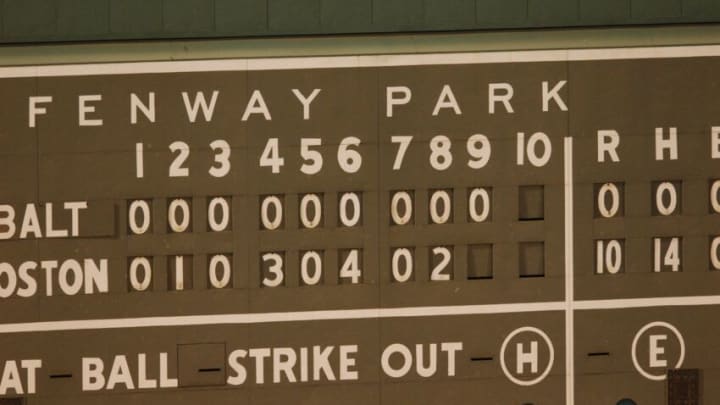The 15-year anniversary of Clay Buchholz’s no-hitter shines spotlight on Boston Red Sox struggles in developing pitching prospects
It’s hard to believe it’s been 15 years since a rookie Clay Buchholz made his second career start in the Major Leagues and threw a no-hitter.
Starting for the Boston Red Sox on September 1, 2007, the right-handed pitcher dominated the Baltimore Orioles. Buchholz tossed a no-hitter, walking just three batters and striking out nine.
Buchholz had already made his imprint, he was ready to be a star. And with Jon Lester on the team as well, Boston was in incredible shape at the position. They had two young, homegrown talents ready to be aces in the rotation.
Lester would go on to throw a no-hitter the very next season (the Red Sox haven’t thrown a no-hitter since then). He would be the ace of the staff until he was traded in 2014. Buchholz was with the team until 2016. And while he wasn’t always a top-tier starter, he did give Boston some phenomenal seasons.
There’s a problem though, a problem that is easy to identify when you look back on the potential we saw with Buchholz and Lester at this time. The Boston Red Sox and developing starting pitching prospects.
Can you name any in the last 10 years? What about 15?
Eduardo Rodriguez is a name some will throw out there. But he was developed by the Baltimore Orioles. The Red Sox acquired him when they sent Andrew Miller to Boston. And Rodriguez was already MLB-ready at that time. No real development.
Henry Owens didn’t work out. Felix Doubront had some big moments and Red Sox fans did love Dubi for a bit. But his best ERA in a single season was 4.32. Brian Johnson showed flashes of greatness, but never more than flashes. Matt Barnes and Brandon Workman both had to be converted to the bullpen, but at least they contributed for a while.
What’s annoying is there was an effort to build up this position through the minor leagues. Ben Cherington had an elite prospect duo of Michael Kopech and Anderson Espinoza. Those two were seen as the aces of the future in Boston.
Then came in Dave Dombroski though. And he sent both away in trades.
Now, to be fair. It worked out well for the Red Sox. They sent Espinoza to the San Diego Padres for Drew Pomeranz. Meanwhile, Kopech was part of the deal to the Chicago White Sox for Chris Sale. Pomeranz did have a great year with Boston in 2017, and even though he struggled in 2018 he was still a part of that World Series team. Obviously, Sale was the ace of that staff. So he doesn’t really need much of an explanation.
But what about now? Pomeranz isn’t on the team anymore and Sale has thrown 48 1/3 innings over his last two seasons combined.
Espinoza is with the Chicago Cubs. He’s dealt with an unlucky number of injuries and didn’t pitch in 2017, 2018, 2019, or 2020. But did get to the Majors this season (he’s 24). Kopech is the big story here, posting a 3.50 ERA with the White Sox last season and a 3.58 this year.
That 2018 World Series was great. No one is trading that away for anything. But Dombrowski didn’t exactly help the Red Sox with their homegrown pitching problem. And you could argue that teams can just trade/sign star pitchers. The issue is, they aren’t always readily available and teams don’t just give them away.
Wouldn’t it be great to bring up a guy you worked on and helped grow? Then have them in your franchise for the next 15 years?
This is something Chaim Bloom is good at. He’s focusing on those young guys. And I won’t give him all the credit. Brayan Bello was actually a Dombrowski addition. So was Bryan Mata (who I think has even more ace potential than Bello).
A lot of the most exciting pitching prospects came during the Dombrowski era. Brandon Walter and Chris Murphy have both soared through the minor league levels. Wikelman Gonzalez has shown potential, and Luis Perales has some absolute filth despite being just 19 in Low-A.
The difference here is, Bloom sees them as potential assets for the team’s future. Not assets for trade.
No. They won’t all work out. Some won’t even make it to the Major Leagues. But this is the most exciting crop of starting pitching talent the Red Sox have had in a long time.
And while a lot of people were upset with a lack of moves this trade deadline, it felt like the writing was on the wall. Unless Boston made some monster splashes, they weren’t moving the needle. There were too many holes. The rotation needed help, the bullpen needed help, and they needed an outfielder or two. First base was a barren wasteland.
The Boston Red Sox haven’t had a star homegrown starting pitcher since the days of Clay Buchholz and Jon Lester. Developing pitching prospects is a pretty obvious key to success though. So it’s good to see this Boston trying to change the narrative surrounding the team and homegrown pitchers.
